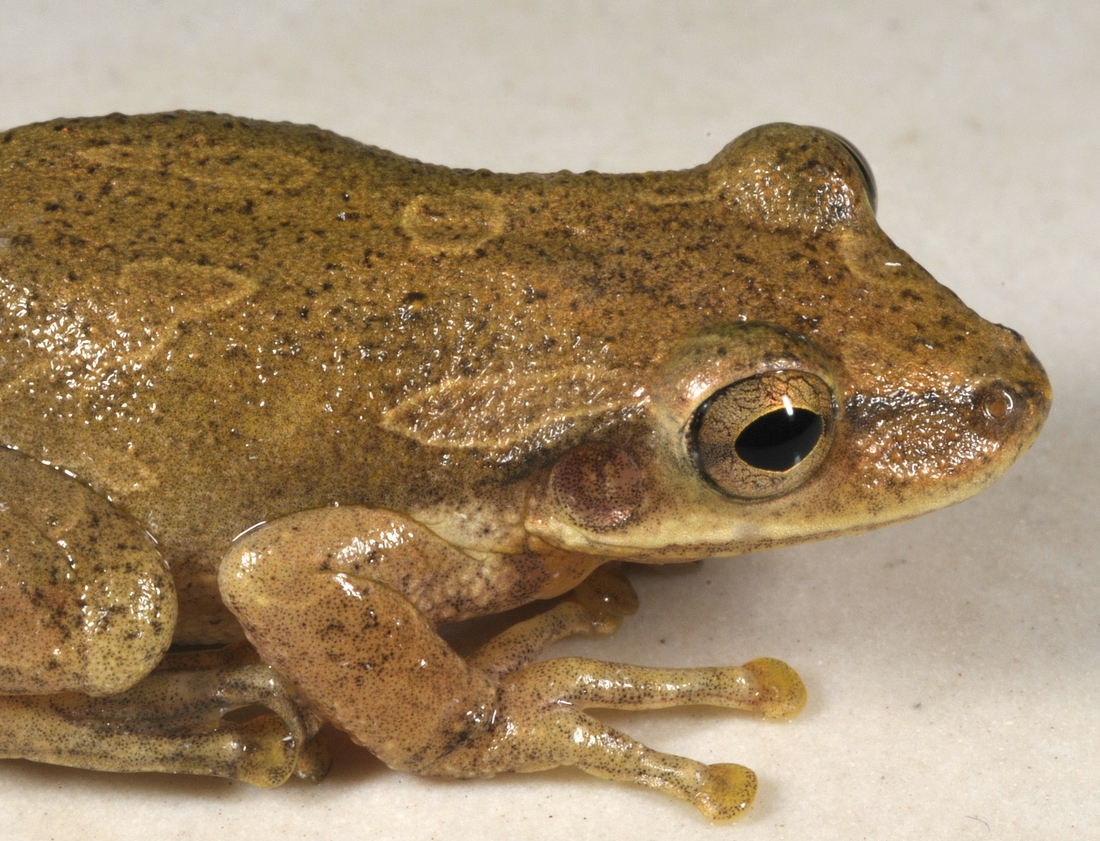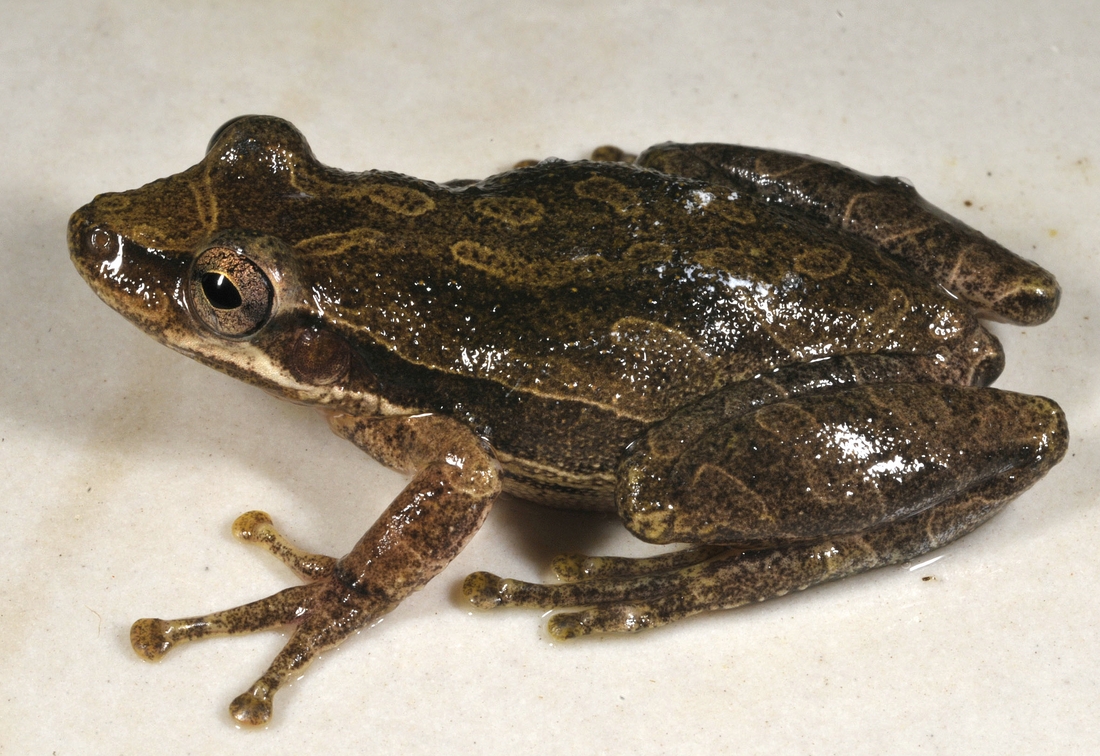Galapagos Species Database
The Galapagos Species Database shares the information about the species from our Natural History Collections.
Scinax quinquefasciatus
Rana de árbol, Fowler's Snouted Treefrog






The Fowler's Snouted Treefrog is small frog that has mottled green, brown or cream coloration.
The tree frog from the coastal zone of mainland Ecuador was recorded for the first time in Galapagos in 1998. Despite attempts at developing an eradication method, no satisfactory method has been found.
Domain
Eukaryota
Kingdom
Animalia
Phylum
Chordata
Class
Amphibia
Order
Anura
Family
Hylidae
Genus
Scinax
Species
quinquefasciatus
Taxon category: Accepted
Taxon origin: Introduced - established
Habitat preferences: Inhabits a wide range of habitats, from coastal lowlands to humid temperate zones and from forest edges to open areas with few trees. Due to the rapid development from egg to adult frog, it can survive in areas with emphemeral (temporary, short, lived) ponds. Tadpoles are intolerant of saline water, and the frogs are usually not found water if the salinity is above 12 g sea salt/litre.
Feeding preferences: Preys on small invertebrates, both aquatic and terrestrial.
Trophic role: Carnivorous
Reproduction mode: Exclusively sexual
Distribution origin: The coast of Ecuador.
Mode of introduction: Accidental
Introduction Pathway: Stowaway
Subpathway: Hitchhiker on transport vehicles/cargo
Introduced status: Naturalized
Invasive status: Invasive
Impact in Galapagos: There are no native amphibians in Galapagos, and the frog is thought to predate on native terrestrial and aquatic invertebrates. However, its impact on native species has never been studied.
Impact elsewhere: Not known to be invasive anywhere else.
Control History in Galapagos: When first discovered, its eradication was attempted in Isabela by paying people for every frog collected, and carrying out community monitoring. Trials were also carried out to assess whether eradication in the Laguna de los Diablos would be possible by adding caffeine, or pumping in sea water. The lagoon used to be connected to the sea, but the coastal road has broken the connection. Its distribution in rainy seasons is now too large to consider eradication.
Year of first record: 1998
Year of introduction: 1998
Map of specimen collection localities or observation records for this species in our collections database.
Distribution: Present in Lagoon of Isabela Sur, Santa Cruz and San Cristòbal. Also intercepted by quarantine control in San Cristóbal. First recorded in Galapagos during the 1997-98 El Niño.
- Jiménez-Uzcátegui, G. Carrión, V., Zabala, J., Buitrón, P. & Milstead, B. (2007) Status of introduced vertebrates in Galapagos. Galapagos Report 2006–2007. Charles Darwin Foundation, Puerto Ayora, p. 136–141.
- Snell, H.L. Márquez, C. (1999) A new class of vertebrates established in Galápagos. Distributed by e-mail and trough the internet.
- Tapia, W. Patry, M., Snell, H. & Carrión, V. (2000) Estado actual de los vertebrados introducidos a las islas Galápagos. Fundación Natura: Informe Galápagos 1999-2000. Quito, Ecuador.
- Patry, M. (2002) Estatus de vertebrados introducidos en las islas mayores de Galápagos y estrategias de manejo. En: Fundación Natura: Informe Galápagos 2001-2002. Quito, Ecuador.
- Vintimilla, J.E. (2005) Estudios para el control y disminución de ranas Scinax quinquefasciatus, con impactos minimos en los Humedales de Isabela Sur (Islas Galapagos). Tesis previa la obtención del titulo de Ingeniero Agrónomo. Universidad de Cuenca. Cuenca, Ecuador, 71pp.



Feeding type: Insectivorous